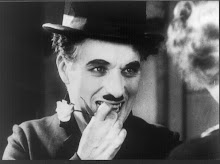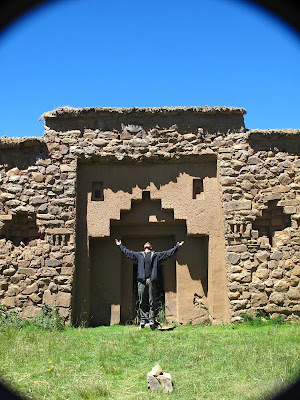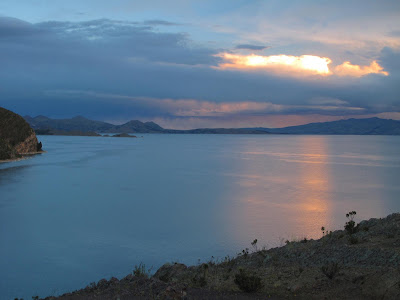
Solo due settimane in Bolivia (di cui la metà a La Paz), poco più ne ho passate in Perù (di cui la metà a Cusco). Ho decisamente perso troppo tempo in Argentina e Cile, perché è nei loro meno abbienti vicini che il mio viaggio ha davvero inizio. Due paesi così simili e diversi tra loro e totalmente differenti dall'Europa e dalle stesse nazioni cilena e argentina, fondamentalmente di stampo europeo.
Non dimenticherò facilmente le strade boliviane, sempre troppo strette per far scorrere tranquillamente due file di auto, e per qualche strana ragione mi trovavo sempre sul lato che affacciava su un burrone. Per non parlare degli autisti col vizio della velocità. La Paz somigliava tanto a Napoli in quanto a circolazione stradale. Come potrò dimenticare l'umiltà della gente boliviana? Come farmi perdonare per essere un turista che pretende di pagare il conto al ristorante in un paesino appena fuori dalla capitale con una banconota da 100 bolivianos: 10 euro per me, una fortuna qui in Bolivia. Il cameriere mi guarda quasi imbarazzato e mi chiede di attendere un attimo per il mio resto. Allora lui esce, nella sua impeccabile divisa in bianco e nero, prende la bici e corre verso la strada principale a farsi cambiare la banconota. Grassa mancia per lui quel giorno. Come dimenticare le farmacie boliviane? Hai bisogno di pillole per il mal di testa ma non ti va di comprare il pacchetto da 30 pastiglie? Niente di più facile: "Quante gliene servono, signore? - Mah, non so, un paio. - Bene, ecco fatto." Una sforbiciata e via, ecco le mie due pillole.
Come potrò dimenticare i ragazzini sulla Isla del Sol, nel lago Titicaca. Prima ti invitano a giocare a palla con loro e poi pretendono di essere pagati per tale servizio. Sono ancora troppo giovani per chiedermi soldi, si accontentano di qualche caramella alla menta. Saranno famosi.
Le cose non cambiano granché in Perù, autisti pazzi, strade pericolose e un'incognita in più: i controlli della polizia. Sull'autobus che dalla Bolivia mi porta a Cusco, sono soltanto uno dei due-tre turisti in mezzo a un folto gruppo di matrone e facce livide peruviane. Quando tutti si agitano perché sembrano aver visto in strada qualcosa che a me sfugge, chiedo all'anziana signora dal simpatico cappello rosa seduta al mio fianco cosa diavolo stia succedendo. "Fiscales, fiscales", grida lei preoccupata. I controlli della finanza, traduco io. Mi chiedo: se tutti sono agitati significa che hanno qualcosa da nascondere. Per un momento spero che la nonnetta dal cappello rosa non m'infili pacchetti di carta stagnola nello zaino. Falso allarme per fortuna, tutti ritornano tranquilli e la nonnetta mi invita al mercato il giorno dopo, dove lei lavora. E io che avevo dubitato di lei.
Come non provare vergogna di fronte all'ennesima puntata di "Non sparate sulla croce rossa", questa volta con un ospite d'eccezione: Juan Carlos re di Spagna. In Perù ancora ricordano quando il re venne a visitare Machu Picchu qualche anno fa. Non ce la faceva a salire in bus come qualsiasi comune mortale, voleva per forza arrivarci con l'elicottero, in cima. Nell'atterraggio il velivolo ha solo rotto qualche pietra qua e là, cosa vuoi che sia. Come se gli indigeni già non fossero abbastanza incazzati con gli spagnoli.
E come non inorridire all'ennesimo regalo ai sudamericani e all'umanità da parte della Chiesa. Il regno spagnolo uccideva quasi il 90 per cento degli indigeni per conto della chiesa durante l'epoca coloniale. I templi sacri agli Inca venivano abbattuti e sostuiti con delle chiese. Qui alcune croci venivano dipinte di verde, perché il verde è il colore della freschezza, così come volevano che fosse la religione cristiana qui in Sudamerica. Ma se si andava a grattare via la vernice, il colore diventava nero cenere. E se si analizzavano i resti che si trovavano su quel nero, probabilmente si potevano incontrare i resti umani di chi veniva bruciato al rogo dall'Inquisizione perché rifiutava di convertirsi alla cristianità. Come dimenticare che la chiesa aveva demonizzato la foglia di coca, salvo poi santificarla quando il re di Spagna fece notare agli alti papaveri ecclesiastici che gli schiavi nelle miniere d'argento lavoravano il doppio quando masticavano le magiche foglioline verdi. Come dimenticare la pesante alluvione che lo scorso gennaio ha quasi distrutto la principale fonte di guadagno di Cusco e dintorni: il turismo. Il governo ha così chiesto a tutte le infrastrutture di offrire sconti fino al 50 per cento per richiamare i turisti scomparsi. Strano ma vero, la chiesa è stata l'unica a mantenere i prezzi per entrare negli edifici religiosi al 100 per cento (pagare per entrare in una chiesa, poi? E i fedeli?). È caduto l'impero Inca, il regno spagnolo ha perso il suo smalto nel tempo, ma l'Impero in terra della chiesa è ancora lì, approfittando della fede genuina di milioni di fedeli per accumulare capitali. Ma lasciamo da parte le polemiche e torniamo ai sorrisi.
Come non sorridere col senno di poi a quella che nell'attimo in cui l'ho vissuta mi sembrava una grossa disgrazia. Il bus non era certo delle migliori compagnie, non poteva permettersi un dvd da mostrare agli ospiti. E allora si va con un cd di film scaricati da internet, qualità pessima, anche nella scelta delle pellicole: 3 film 3 consecutivi di Sylvester Stallone: dall'ultimo, tremendo Rocky Balboa fino agli occhiali a specchio del tamarrissimo Cobra.
Come non guardare con affetto alla gente del posto che si meravigliava quando prendevo un bus locale, dove una faccia bianca non l'avevano mai vista. E quell'affettuoso nomignolo, gringo, che era l'unica parola che potevo capire dal loro chiacchiericcio. Come non sorridere di fronte alla stanchezza al ritorno da Machu Picchu, quando non riuscivo a vedere il mio nome su nessun cartello alla stazione dei treni. Eppure l'agenzia mi aveva assicurato che avrei trovato qualcuno ad attendermi. Solo un lampo di genio mi ha fatto capire che quella signora aspettava proprio me, Blisandro Bonico (!?!). Come non sorridere davanti alla macchina fotografica delle compagnie di autobus più serie, che fanno la foto a tutti i passeggeri per evitare che a qualcuno venga la bella idea di rubare oggetti di valore durante il sonno degli altri, cosa che avveniva regolarmente fino a qualche anno fa.
Ricorderò con piacere e un po' di disgusto quella sera al ristorante ad assaggiare uno dei piatti tipici peruviani dai tempi degli stessi Inca: il porcellino d'india. E se in Europa è un animale domestico, ad Arequipa me lo sono visto servire così in un piatto.
Per fortuna che in un viaggio del genere esistono anche i momenti di riposo, quelli in cui vuoi soltanto cazzeggiare e prenderti una "giornata di vacanza", dove non vuoi organizzare le prossime mosse, dove non vuoi pensare che devi chiamare il prossimo ostello o che devi andare a prendere i vestiti in lavanderia. Vuoi soltanto rilassarti, alla vecchia, buona, sana maniera europea. E se la domenica di Pasqua in Bolivia coincide con le elezioni regionali e tutta La Paz è praticamente morta e deserta, non ci resta altro da fare che tornare bambini e andare a far saltare un paio di denti (solo in senso figurato) sulle autoscontro, al grido incazzato di "Go bitches", andiamo figli di cagna. O passare la domenica pomeriggio a Cusco, la capitale dell'antico impero Inca, giocando a scarabeo e sorseggiando una Inka Cola, la bevanda preferita dai peruviani. Per la cronaca, ho giocato a scarabeo in inglese con due amiche britanniche e ho vinto due volte su tre. Per tutto il resto ci sarà anche Mastercard, ma questo di sicuro non ha prezzo.
------------------------------------------------------------------------------------
------------------------------------------------------------------------------------
Only two weeks spent in Bolivia (half of which in La Paz), a little more in Peru (half of which in Cusco). I guess I wasted too much time in Argentina and Chile, because it is in their poorer neighbors that my journey has really begun. Two countries so similar and different between each other and totally different from Europe and Chile and Argentina themselves, mainly European-style.
I won't easily forget Bolivian roads, always too narrow for two rows of cars, and for some strange reason I was always on the side overlooking the edge. Not to mention the drivers driving as hell. La Paz looks like Naples as for cars circulation. How can I forget the humble Bolivian people? How can they forgive me for being such a tourist when I wanted to pay the bill at a restaurant in a village just outside the capital with a 100 Bolivianos note: 10 euros for me, a fortune here in Bolivia. The waiter looks at me almost embarrassed and asks to wait a moment for my change. Then he goes out in his impeccable black and white uniform, takes the bike and rides towards the main road to go get my change. Fat tip for him that day. How can I forget the Bolivian pharmacies? Need painkillers but you don't want to buy the 30 pills package? Nothing easier: "How many do you need, sir? - Well, I don't know, a couple. - Well, that's it." A pair of scissors et voilà, here's my two pills.
How can I forget the kids on the Isla del Sol, in Lake Titicaca. First they invite you to play football with them and then they claim to be paid for the service. They're still too young to ask for money, they're happy with just some mint candies. The'll be rich.
Things don't change much in Peru. Crazy drivers, dangerous roads plus a new one: police control. On the bus that takes me from Bolivia to Cusco, I'm just one of the two or three tourists among a large group of mamas and Peruvian livid faces. When everyone seems to get excited about something on the street that escapes me, I ask the nice elderly lady in a pink hat sitting next to me what the hell is going on. "Fiscales, fiscales," worried she cries. Police controls, I translate. I wonder: if everyone is alarmed it means they have something to hide. For a moment I hope that the granny in the pink hat doesn't slip any foil packet in my bag. False alarm, fortunately, all of them calm down and the granny invites me to the market the next day, where she works. And I had doubted about her.
How can we not feel ashamed in front of another episode of "Do not shoot the red cross", this time with a special guest: King Juan Carlos of Spain. In Peru they still remember when the king came to visit Machu Picchu a few years ago. He could not get a shuttle bus like any ordinary mortal, he wanted to get on top by helicopter. In the landing the aircraft only broke a few stones here and there, no big deal I guess. As if the natives were not already angry enough with the Spaniards.
How not to horrify for the umpteenth gift to South America and to humanity by the Church. The Spanish reign killed almost the 90 percent of natives on behalf of the church during the colonial era. The sacred Inca temples were destroyed and replaced with churches. Here they used to paint the crosses with a green color, because green is the color of freshness, as they wanted the Christian religion to be in South America. But if you scrape off the paint, the color becomes black ash. And if you analyze the remains on that black, you probably could find human ashes of someone burned at the stake by the Inquisition because of their refusal to convert to Christianity. How to forget that the church had demonized the coca leaf, only to sanctify it when the King of Spain pointed out to the higher prelates that the slaves in the silver mines worked twice when chewing the magical green leaf. How to forget the heavy floods last January that almost destroyed the main source of income in and around Cusco: tourism. The Government had therefore asked all the infrastructures to offer discounts up to 50 percent to attract tourists once again. Strange but true, the church was the only one to keep prices to 100 percent in order to enter the religious buildings (pay to enter a church? What about the faithful?). The Inca Empire fell, the Spanish kingdom has lost its ground over all this time, but the empire on earth of the church is still there, taking advantage of the genuine faith of millions of people to accumulate money. But let's leave aside the controversy and return the smiles.
How not to laugh in hindsight at what at that moment seemed a great misfortune. The bus was not one of the best and couldn't afford a DVD to show its guests. So they put on a CD of films downloaded from the internet, poor quality, even in the movie choice: three (3!) consecutive movies starring Sylvester Stallone, from the last, terrible Rocky Balboa up to the mirrored sunglasses of the evergreen Cobra.
How not to look affectionately at the locals who were surprised everytime I took a local bus, where they had never seen a white face. And that sweet nickname, gringo, who was the only word I could understand from their chatter. How not to smile at the train station, returning from Machu Picchu, when I could not see my name on any signs. Yet the agency had assured me that I would find someone waiting for me. Just a flash of genius made me realize that that lady was waiting just for me, Blisandro Bonico (!?!). How not to smile in front of the camera of more reliable bus companies, taking a picture of all passengers to ensure that someone doesn't get the idea of stealing valuables during other people sleep, which occurred regularly until a few years ago.
I'll remember with pleasure and a bit of disgust that evening at a restaurant to taste one of the typical Peruvian dishes since the time of the Incas: the guinea pig. And if in Europe it's considered a pet, they were serving it this way on a plate in Arequipa.
Fortunately, on a trip like this there are moments of relax, the ones where you just want to mess around and take a day of "holiday" when you don't want to organize the next steps, don't want to call the next hostel or go get the clothes from the laundry. You just want to rest in the old, good, fashioned European way. And if Easter Sunday in Bolivia overlaps with the regional elections and the entire La Paz is virtually dead and deserted, there is nothing left to do but return children for a day and go lose some teeth (only figuratively, mind) on the bumper cars, at the angry cry of "Go bitches". Or spend a Sunday afternoon in Cusco, the capital of the Inca empire, playing Scrabble and sipping an Inca Cola, the Peruvians favourite drink. For the record, I played Scrabble in English with two British friends and won two times out of three. For everything else there might be Mastercard, but there are some things you can't buy.


































































